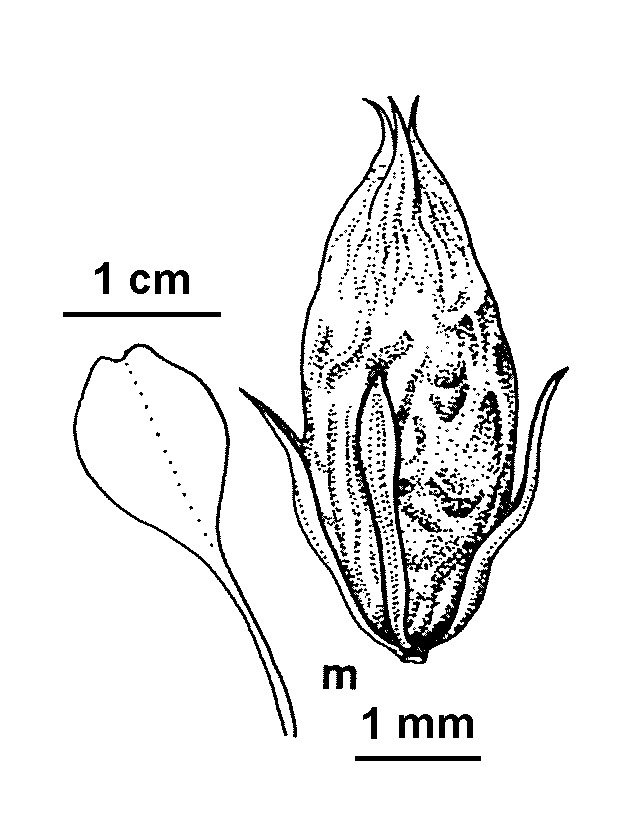Amaranthus macrocarpus var. macrocarpus
Dwarf AmaranthProstrate to decumbent, glabrous annual. Stems to c. 40 cm long. Leaves long-petiolate, elliptic to obovate, lamina mostly 8–20 mm long, 4–15 mm wide; apex usually emarginate, sometimes shortly mucronate. Flowers unisexual, in axillary clusters c. 8 mm diam.; bracts and bracteoles elliptic, to c. 1 mm long, sometimes rudimentary; tepals 3 (occasionally 4 in some flowers on same plant), oblanceolate, 1.5–2.5 mm long, acute; stamens 3. Utricle indehiscent, narrowly ovoid, c. twice as long as perianth, irregularly puckered, at least toward base, blackish; seed elliptic, biconvex, c. 1 mm long. Flowers Dec.–Mar.
MuM, VRiv, MSB, RobP, MuF. Also NT, SA, Qld, NSW. Rather rare in Victoria, appearing only after summer rains along the Murray River floodplain downstream from about Echuca. Sometimes appearing on roadsides and in railyards where possibly introduced with grain etc.
The pale-fruited var. pallidus Benth. is known only from Queensland and New South Wales.
Walsh, N.G. (1996). Amaranthaceae. In: Walsh, N.G.; Entwisle, T.J., Flora of Victoria Vol. 3, Dicotyledons Winteraceae to Myrtaceae, pp. 199–215. Inkata Press, Melbourne.
 Spinning
Spinning
